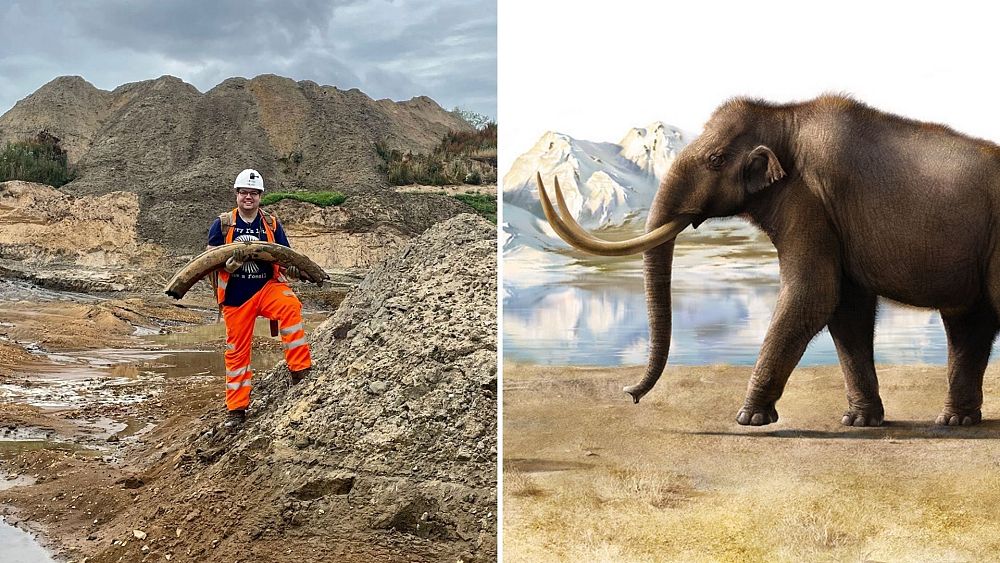Fossil hunters unearth 400,000-year-old mammoth tusk in UK quarry

During a routine visit to a quarry in Cambridgeshire, two palaeontologists made a spectacular discovery: an intact tusk from a Steppe mammoth.
An astonishing discovery was made at a quarry in Cambridgeshire, UK, when two palaeontologists stumbled upon a mammoth tusk believed to be over 400,000 years old.
The tusk belongs to the Steppe mammoth, which ranks as as the second-largest species of mammoth ever to exist.
“We started walking down into the quarry, just looking around and it just stuck out like a sore thumb,” Jamie Jordan, a 33-year-old curator and palaeontologist, who discovered the tusk with his colleague Sarah Moore, told Euronews Culture.
Describing the significance of the discovery, Jordan added, “It’s very significant. We’ve had a tusk from there before, but not as complete as that and not as well preserved either.”
The discovery is further amplified by the presence of predation marks on the tusk.
These marks, characterised by impressions left by the teeth of predators, hold the potential to provide insights into the intricate dynamics between predators and prey and shed light on the behaviours of both ancient animals and humans during that particular era.
Preserving the rare find
The four-foot-long tusk is now undergoing a preservation process that will take approximately six months to complete.
This process will be conducted at the Fossils Galore museum, located in March, Cambridgeshire, where the public will have the opportunity to witness the preservation work.
Sarah Moore explains, “It’s going to take us about six months in total, we reckon, to fully preserve this task, and we will be doing it on full display to the public. So anyone that comes down to the museum will actually be able to see behind the scenes and see how we do it.”
To ensure the preservation of the mammoth tusk, a meticulous approach is carried out.
Jubilee and metal clips are used to securely hold the tusk in place, preventing any risk of damage or separation. Additionally, a preservation fluid, invented by Jamie himself at the young age of 12, is applied to safeguard the tusk.
In addition to the mammoth tusk, Jamie and Sarah have made several other significant discoveries in recent years.
One notable find was the skeleton of an Iguanodon dinosaur, estimated to be 132 million years old, which they uncovered in 2017. The dinosaur’s remains were entombed within large blocks of siderite mineral.
Preservation on the dinosaur skeleton is still underway and it’s estimated to take another five to eight years to fully expose all the bones.
A lifelong fascination for fossils
For Jamie, his passion for fossils and palaeontology dates back to his early childhood.
He shared, “When I was four years old, I was one of those kids that got into dinosaurs and couldn’t really get out of it. I found my first fossil when I was four, and it just triggered it from there.”
“I really wanted to build up a fossil collection, and then it got pretty much out of hand. I got too many fossils and I needed somewhere to display them.”
At the age of 18, Jamie opened the Fossils Galore museum, which has grown steadily over the years, showcasing a variety of specimens and educational activities.
But as time has passed, Fossils Galore has reached a point where its current space is no longer sufficient. Therefore, the team is actively seeking opportunities to expand and create a larger facility capable of accommodating their ever-expanding collection.
A link to their fundraiser can be found here.
Check out the video in the web player above to see the moment the mammoth tusk was discovered.
Source: Euro News















